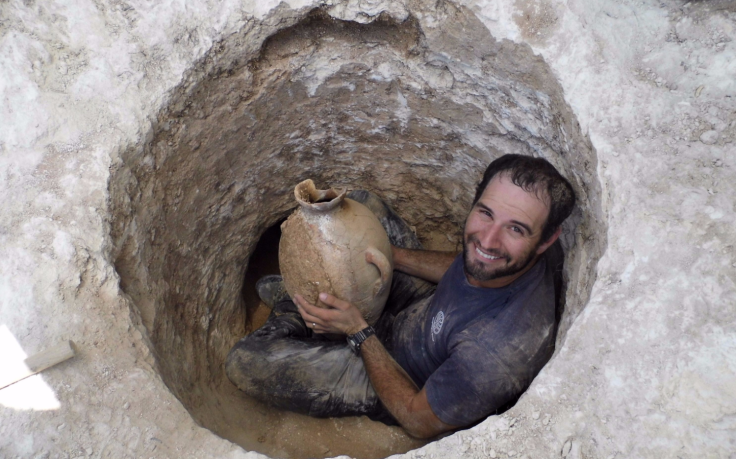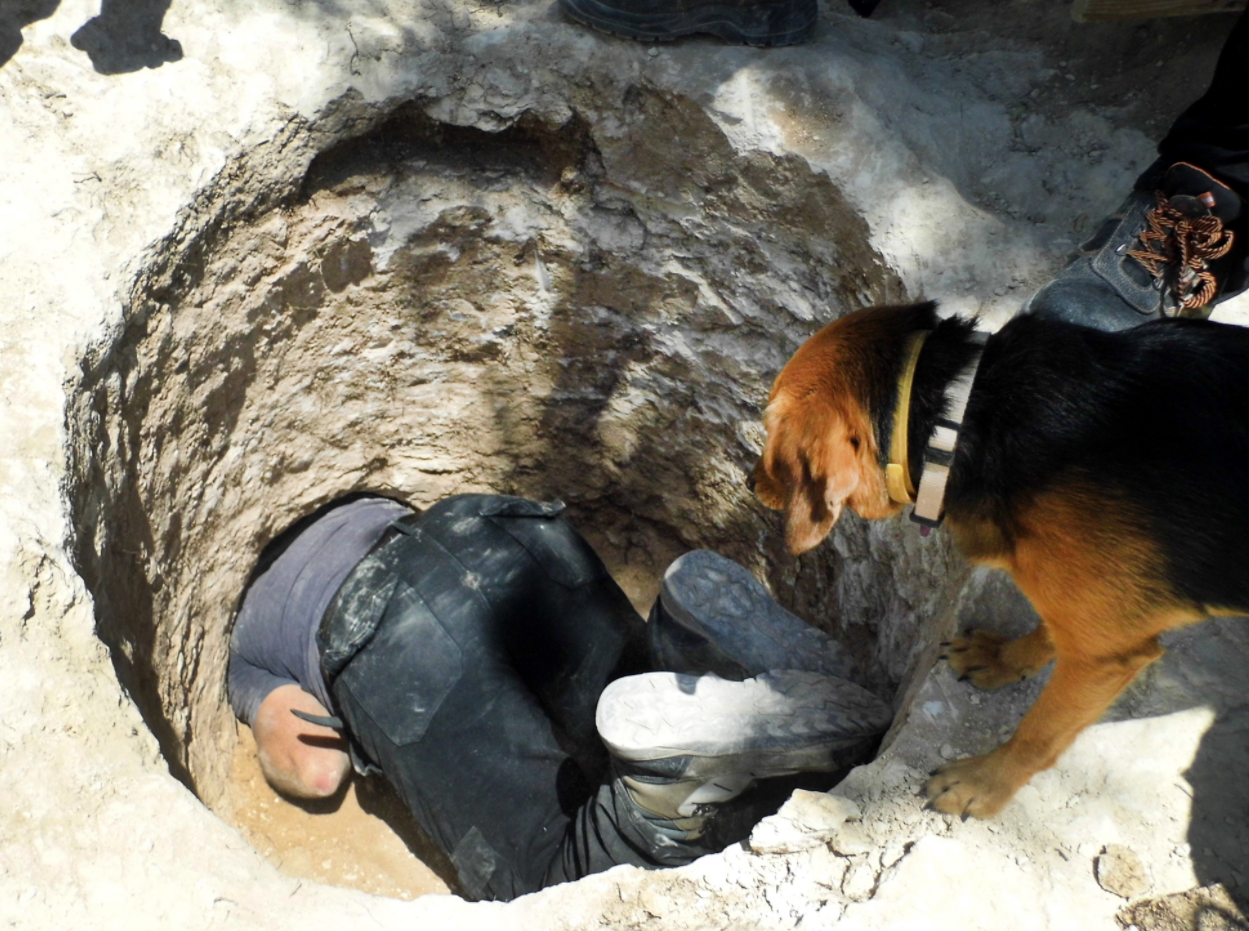Jar of 4,000-year-old decapitated toads discovered in Canaanite tomb
Excavation of a burial site in Jerusalem also yielded exotic myrtle and date pollen.

A total of nine headless toads have been found in an ancient jar in a Canaanite tomb just outside Jerusalem's Biblical Zoo. The discovery is puzzling, as offerings of toads aren't usually found in ancient graves in the area.
The jar was found in a tomb shaft first excavated in 1991. Archaeologists were cleaning debris from the site this year when they found a circular stone seal blocking off the entrance of a shaft.
Below this, a tomb was carved out of limestone, measuring about 1.5m long, 1.2m wide and 80cm high. One partial skeleton was inside, curled in the foetal position with its head on a headrest.
The grave contained pollen from date palms and myrtle bushes, plants not native to the local area. There was also the jar full of the remains of toads.
Filling jars with food was a common practice in the Bronze Age Middle East. The dead were buried with the sustenance they might need in the next life. Common offerings included sheep, goat, ox or gazelle meat in a ceramic jar.
This grave was one of only two Bronze Age burial sites where toads were on the menu in the afterlife.
As the food in the burials were typically part of the everyday cuisine of the culture, toads are thought to have been a regular part of the local people's diet. They may have been a particularly acquired taste. It's thought that for the afterlife, the toads were decapitated to help remove their poisonous skin.
"We understand that this was part of the food consumed while still alive," Shua Kisilevitz of the Israel Antiquities Authority – and co-director of the dig – told the Times of Israel.
The Canaanite people lived in what is now Lebanon and Israel, and parts of Syria and Jordan. They worshipped a goddess named Astarte and her consort Baal. In the Bronze Age, the Canaanite culture flourished in this part of the Nahal Repha'im basin.
"In recent years excavations in the area have uncovered two settlement sites, two temples and a number of cemeteries, which provide new insight into the life of the local population at that time," dig directors Kisilevitz and Zohar Turgeman-Yaffe said in a statement.


© Copyright IBTimes 2025. All rights reserved.






















